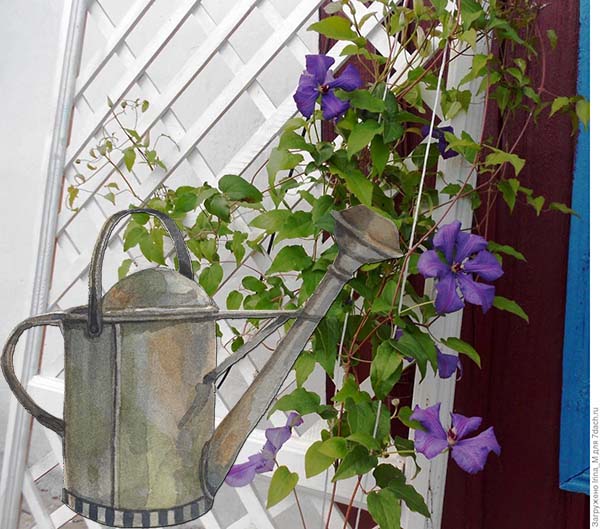How to plant clematis in the open ground in the spring and properly care
This is how novice summer residents are arranged that they find themselves immensely eager for a variety of flowers on their site. But clematis stands alone among all the handsome men. It is impossible not to feel a special attraction to this flower. Indeed, according to some gardeners, if the rose is the queen of the garden, then clematis is the king. It is no coincidence that it is so difficult to take your eyes off the living waterfall of colossally beautiful flowers. However, in order for the luxurious clematis to live, bloom and not need anything, its owners need to make a lot of efforts.
In what time frame, where and how it is better to plant a vine in spring in open ground, how to properly care for it after planting, will be discussed in this article.
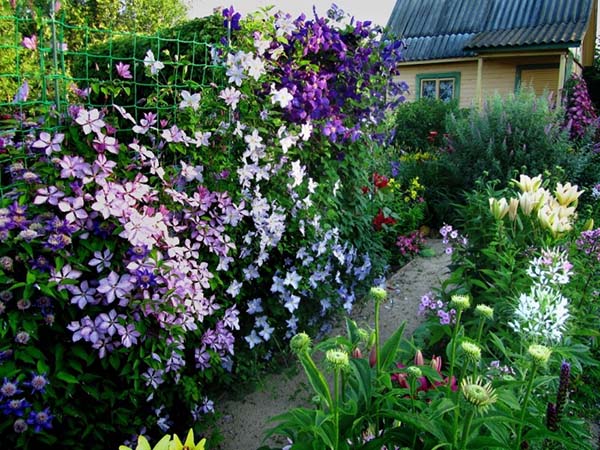
Content
Varieties and types of clematis
There are tens of hundreds of clematis varieties, which one is right for you, your region and climate, you can determine by watching one of the videos below.
Advice! The most "low-maintenance" clematis are considered to be 3 pruning groups, also partly the second, but with the first group everything is somewhat more complicated ...

Video: the best varieties of clematis for the Central strip and the Moscow region
Video: the best varieties for the Urals
Video: better varieties for Siberia
What to do with clematis after buying a seedling and how to save it before planting
Important! Before buying a clematis seedling, you need to determine which pruning group it belongs to. This is very important in order to properly care for the vine.
Clematis seedlings can be sold in completely different forms. This can be a one-year rooted shoot in a bag with loose peat (seedling with an open root system) or annual seedlings in pots with a closed root system. It is worth knowing that their storage before planting is somewhat different.

The rooted shoot should be immediately removed from the bag and placed in a two-liter plastic bottle with a cut-off neck (or pot) and drainage holes. Then dig it into the ground for a year, where it will grow up all this time, and then transplant it to a permanent place in the garden.
Video: what to do with purchased annual rooted clematis shoots
But a clematis seedling in a container (with a closed root system) is purchased immediately before planting. If you did it too early, then the following tips are for you.
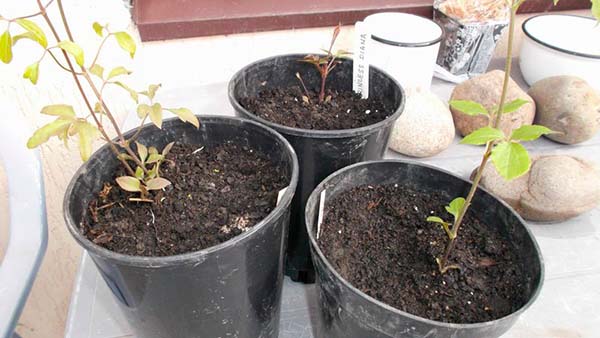
To preserve and bring clematis seedlings in pots (with a closed root system) to planting, you must first monitor watering. Due to the fact that the pots are rather small, and the soil in them is "transportable" (based on peat), it may well happen that once it dries up, the soil will retain moisture very poorly in the future. Therefore, you should regularly monitor soil moisture.
To disinfect the soil, it is advisable to spill the seedling with a solution after purchase several times, and preferably once a week Fitosporin.
After buying a seedling, you should not immediately put it on the sunniest place in the apartment. It is better to keep it a little away from direct sunlight for the first time, otherwise the plant may get sunburn. And then, of course, you need to put it on a light windowsill, otherwise clematis will begin to stretch out due to lack of light.
If you notice that the seedling has large enough buds, they should be cut off (preferably with scissors and only buds!). After all, the plant is too weak to bloom, and such a load is completely useless and even dangerous to it.
Video: how to keep clematis before planting
When and how to plant clematis in open ground
Landing dates
The optimal time for planting clematis in spring is the second half of spring (from April to May). Moreover, you need to have time to plant the seedlings, while their buds have not yet blossomed, but only swelled (leaves did not appear).
In spring, clematis is planted, as a rule, in colder and more northern regions, for example, in Siberia and the Urals. Autumn planting is preferable for warmer climatic zones, for example, for the southern regions (Krasnodar Territory, Rostov Region).
However! The same seedlings with a closed root system (in containers) can be planted during the entire warm period (from April to October).
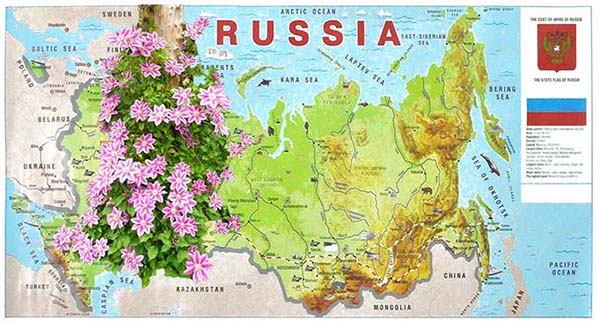
According to the lunar calendar for 2021
Choose a specific date for planting clematis seedlings can help you Moon calendar.
So favorable days for the spring planting of clematis in 2021, according to the lunar calendar, are:
- in March - 4-6, 12-14, 26-31;
- in April - 1, 2, 5-7, 9, 13-15, 24, 25;
- in May - 2-6, 15-17, 20, 21, 25-31.
Unfavorable days, according to the lunar calendar for 2021, for planting clematis in spring, the following dates are (days of the Full Moon and New moons, as well as the period when the Moon is in Aquarius, because it is a barren and dry sign - italicized):
- in March -9-10, 13, 28;
- in April -5-6, 12, 27;
- in May -2-4, 11, 26, 30-31.
Landing place
Clematis likes to grow in sunny places (which are lit by the sun almost all day) and does not tolerate drafts (northern winds).
Important! However, it is worth considering that some types of clematis can grow in a small and openwork shade. These include those varieties that have a fairly bright color.
The flower will also not be able to develop normally in the place where the water stagnates, so it is optimal to plant it on a certain hill or on a raised bed.
It is extremely important to consider the location of the groundwater table. If they are close enough (less than 1 meter), then your clematis is unlikely to grow normally. The plant does not tolerate close groundwater.
Choose a place where you can place the supports, as it is a climbing plant. Clematis looks very beautiful, weaving along the gazebo.
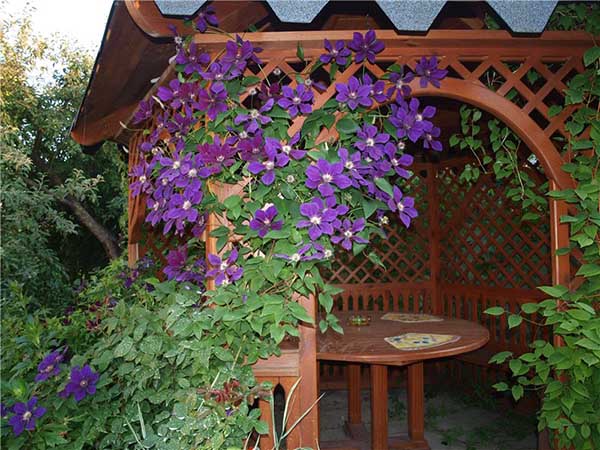
If you are going to plant a plant near a country house or a shed, then it is advisable to retreat at least 50, and preferably all 100-150 cm from the structure, so that the root system can develop normally.

Soil and planting hole
The soil for clematis requires neutral (6.5 pH), the plant does not like acidic soils. If your soil is acidic, then it is advisable to lime it (neutralize) by adding a couple of glasses to the soil wood ashand then mix thoroughly with earth. Or you can use a special soil deoxidizer (the same dolomite flour).
If you use organic fertilizers, such as compost or humus, then you must be completely sure of their quality (that they are fully ripe). Naturally, you can also use mineral fertilizers (it is optimal to just add 30-40 g of nitroammophoska).
A landing pit for clematis is required large enough. Despite the fact that the seedling is quite small, in the future it will still grow. Its optimal size is 50-60 (height) by 50-60 (width, more precisely, diameter) centimeters or even more (if the soil is clayey).
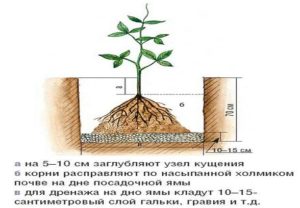
On heavy soils, drainage must be done. The plant should not get wet. You can use any inert material for drainage. It can be pebbles, gravel, expanded clay. The thickness of the drainage layer is about 10-15 centimeters.
Advice! Spare no drainage materials! He will save your plant when there are heavy rains.
As for the planting scheme, clematis, as a rule, are planted at a distance of 1-1.5 meters.
Direct planting in the ground
Advice! If you have a seedling with an open root system, it is advisable to soak it in one of the root growth stimulants, for example, in Kornevin or Heteroauxin, the day before planting. If it is closed - exactly with the instructions below.

Step-by-step instructions for planting a clematis seedling in open ground:
- Dig a planting hole of the required size.
- Make drainage.
- Prepare a nutrient mixture.
- Fill the hole with the soil mixture made earlier and compact slightly with your foot.
- Make a small hole in the middle about the size of the pot in which the seedling is placed.
If you have a seedling with an open root system, then you need to fill in a small mound and plant on it, spreading the roots to the sides.
- Pull out the seedling along with the lump, after spilling it well, so that it gets better.
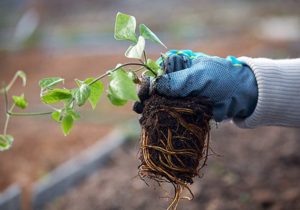
- Place the seedling in the hole, dig in with earth and compact with your hand.
Important! If the shoots are still green, then it is impossible to deepen for now (this will need to be done at the end of summer-autumn), but if there are lignified shoots, then it is necessary to deepen (up to green).
In this case, the root collar should be deepened by 5-8 centimeters (and in cold regions, where there are snowless winters, it is better even by 10-12 cm). If you do not do this and plant it flush with the ground, then the seedling will simply freeze out in winter.
- After planting and watering, the trunk circle should preferably be mulched (for example, with peat, sawdust) so that the soil retains moisture longer. This will prevent it (the soil) from overheating.
- Place a small support next to the seedling and tie it to it so that the plant does not loosen from the wind. In the future, it will be necessary to install larger trellises to support it.
- For 1-2 months after planting, it is advisable to enclose the plant (shade) from the sunny side, creating a kind of screen of non-woven material (spunbond). In such conditions, the plant will be in a very calm environment and quickly take root: the sun will not burn it, and the wind will blow.
Video: how to plant clematis in the spring
Advice! It is very good if you plant some undersized annuals next to the clematis so that the ground does not dry out, and the lower part of the stems is also covered. All this is very beneficial for the plant. The best neighbors for this vine will be marigold and calendula, they will also be able to protect the plant from insect pests (scare off their smell).

Outdoor clematis care
Full care of clematis in the open field should include the following garden manipulations: watering, feeding, pruning and shelter. Further, about each in more detail.
And don't forget to build or install a support around which clematis will curl!
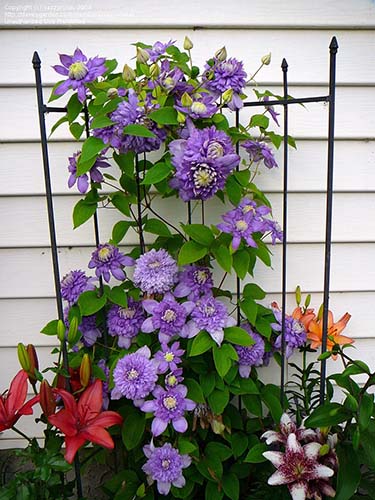
Watering
Watering clematis should be regular. Liana loves moist soil, but, as you remember, without stagnant water. If the summer is dry, then in the heat it is worth watering 2 times in 7 days. The rest of the time, watering should be a little less frequent and more abundant, somewhere 1 time in 7-10 days. In this case, you must saturate the soil to a depth of 30-40 cm (root layer).
After each watering, it is advisable to loosen the soil around the seedling (if it was not previously mulched).
Top dressing
Clematis is fed with both mineral and organic fertilizers.
He especially loves feeding. wood ash (1 glass to 1 bucket of water).
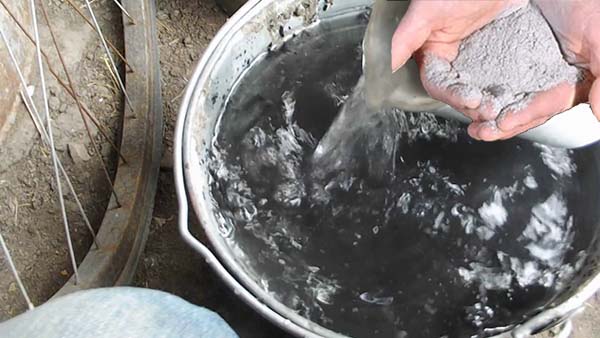
Recommendation! It is advisable to apply all fertilizers for clematis in liquid form.
Liana for good development and growth of green mass in the spring especially requires nitrogen fertilization. For example, you can fertilize it with urea (carbamide).
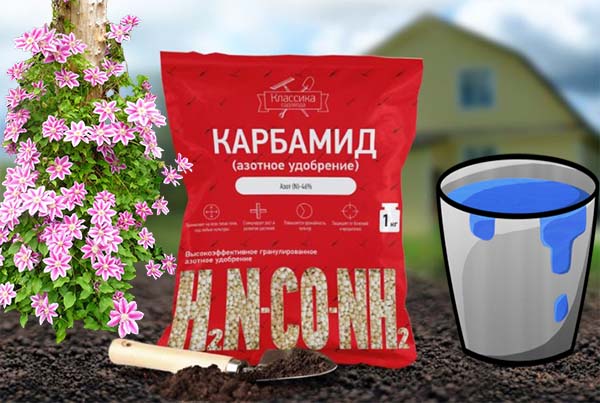
Before flowering, preference should be given to potassium-phosphorus fertilizing, while focusing on potassium (potassium sulfate, wood ash), and already at the end and after flowering - on phosphorus (superphosphate).
If you prefer organic matter, then for flowering and growth, clematis can be fed 3-4 times per season with mullein infusion (based on 1 liter of funds per bucket of water) or chicken droppings (1 liter of funds for 15 liters of water).
Remember! Fertilizers should only be applied after watering.
Pruning and sheltering
In order for the vine to bloom efficiently, you must make sure to which pruning group the clematis belongs to. And accordingly, you need to properly cut and cover it for the winter.
- Group 1 - these are vines that bloom on last year's shoots. They need to be covered well enough, preferably cut off in the spring, but you can also in the fall.
- Group 2 - these are vines that bloom on last year's and current shoots. They are more popular. For the winter, such clematis must also be covered carefully. It is better to cut it in 2 stages - in the summer the part that bloomed, and in the fall, slightly shorten those shoots that formed during the current year. In the spring, do sanitary pruning.
- Group 3 - these are vines that bloom on the shoots of the current year. Most popular group. In fact, no shelter for the winter is required; pruning is carried out in the fall.
Advice! The site already has an article about how to prune clematis of different pruning groups, and properly cover for the winter.
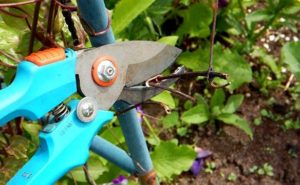
Praise and glory to those flower growers who, with their work, give the opportunity to admire the catchy flowering of an exquisite liana all summer, and sometimes even autumn. But in order for your work to go in the right direction, adhere to our recommendations for proper planting and competent care of clematis, and it will undoubtedly delight you with exuberant and long-term flowering.
Video: planting technology for clematis


